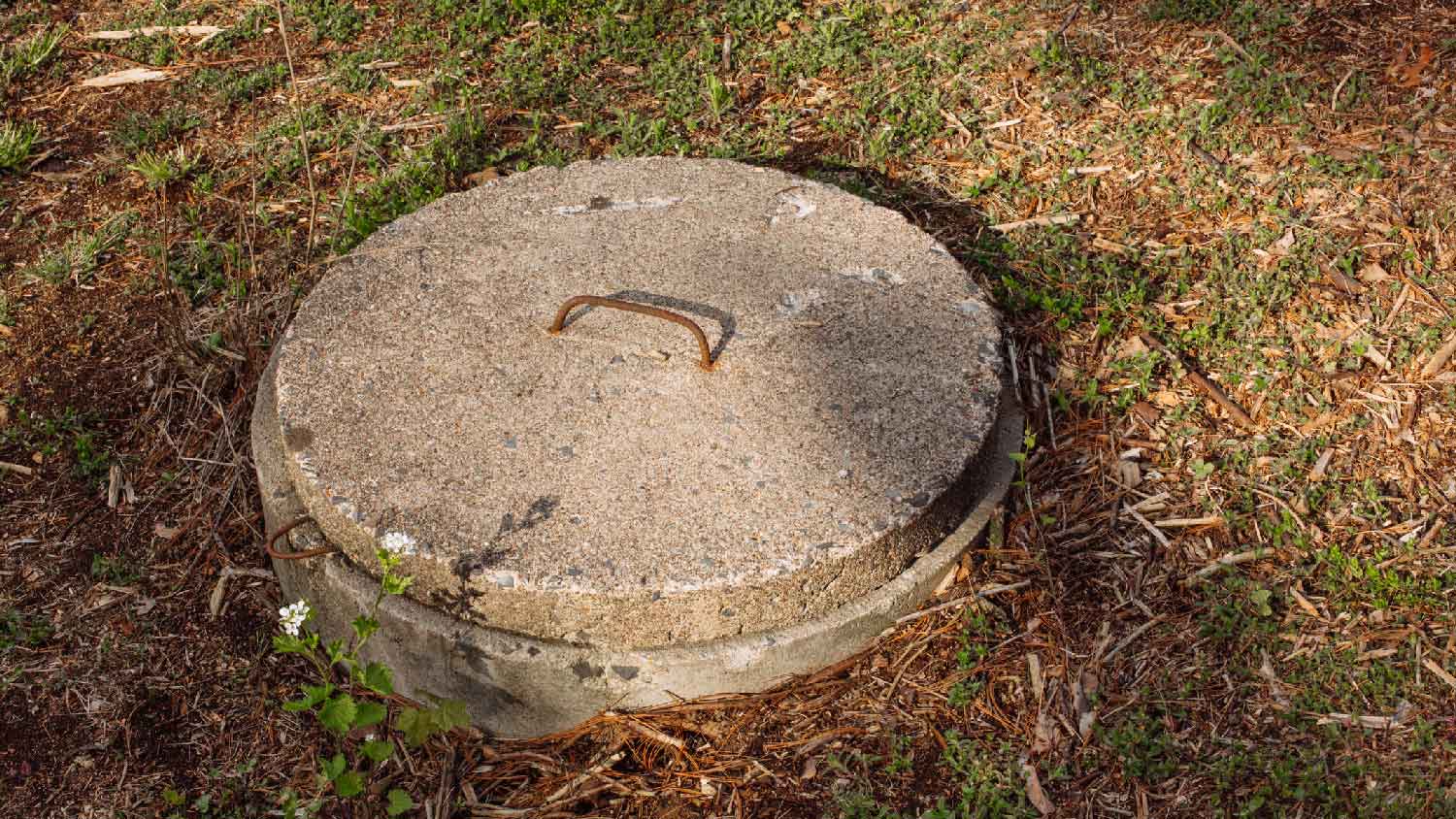
Cisterns can save you money and help the environment. So what’s the cost of a cistern and how does it compare to other rainwater collection systems?
That isn’t just a hole in the ground


A cistern hole is a water storage tank designed to collect rainwater.
Cisterns collect rainwater, while wells use natural groundwater sources.
To make your cistern water drinkable, you have to filter it to remove debris.
Old cisterns should be repurposed or sealed to prevent accidents or contamination.
Hiring a contractor to build your cistern can save you from costly mistakes.
Have you ever seen those mysterious holes in the ground that collect rainwater? Chances are you were looking at a cistern hole. If you have one on your property, it’s time to get the lowdown on what a cistern hole is and how much it costs to install and maintain. Learn the secrets of how to make cistern-hole water safe to drink and pick up some clever ideas for repurposing old cistern holes while you’re at it.
A cistern, often called a cistern hole, is an underground or above-ground water storage tank designed to collect and store rainwater or other water sources. These reservoirs aid in your home’s water management, particularly in locations with less freshwater resources.
Cisterns capture and store rainwater for a variety of purposes:
Irrigation
Landscaping
Household water needs
Aiding in water conservation
Reducing the strain on municipal water supplies
An eco-friendly solution for sustainable water use in residential and agricultural settings
Building a cistern hole yourself can be cost-effective and empowering since you can tailor the cistern to your needs. However, cistern holes also require a certain level of expertise and can take time to build.
Hiring a local well contractor near you can save you time and stress. They’ll bring their experience and knowledge of local regulations, which can potentially save you from costly mistakes.
Before you decide, weigh your skills, resources, and the project's complexity. The decision depends on your comfort level with construction tasks, your budget, and your desire for a hassle-free, expertly executed cistern hole installation.
If you’re on a budget, a smaller cistern hole with up to 2,000 gallons of capacity can be installed on your own for just under $2,300.
In the $2,500 to $12,000 range, homeowners can choose from above-ground barrels and cisterns, and can even increase water storage capacity by getting multiple smaller barrels. This price range includes more advanced installation methods such as connecting the system to gutter downspouts or lawn irrigation.
For those willing to invest more, high-end underground cisterns cost $12,000 to $22,000, including labor and additional features. Professional installation may be needed for these more complex systems.

While they seem similar, a cistern hole is an artificial underground reservoir for storing rainwater, while a well is a hole drilled or dug to access groundwater. Cisterns rely on collected rainwater, while wells tap into natural groundwater sources. Cisterns are typically closed systems, whereas wells provide direct access to underground water tables.
| Feature | Cistern Hole | Well |
|---|---|---|
| Water source | Rainwater and runoff | Groundwater |
| Construction | Built reservoir | Drilled hole |
| Water quality | Requires treatment | Often drinkable |
| Maintenance | Regular cleaning | Very little cleaning |
| Sustainability | High sustainability (uses precipitation) | Low sustainability (uses groundwater source) |
If you want to make your cistern water drinkable, you’ll have to filter it to remove debris and sediment using a fine mesh or sediment filter.
To do this:
Disinfect the water by adding chlorine or another water disinfectant
Follow the recommended dosage instructions
Let it sit for a while (usually about 30 minutes) to let the disinfectant work
Afterward, if you don't like the taste of chlorine, consider using a carbon filter to remove the residual odor or taste
Perform regular cistern maintenance to prevent contamination and test the water quality so you know it meets drinking water standards
You may be wondering what to do with an old cistern hole. Luckily, there are a few solutions that are creative and eco-friendly. Before you decide, make sure it’s safely repurposed or decommissioned according to local regulations.
Convert it into a rain garden to add to your landscaping while managing rainwater runoff
Use it as an underground root cellar for food storage—your supplies will like its cool, temperature-stable environment
Transform it into a fish pond
Seal it to prevent accidents or contamination
From average costs to expert advice, get all the answers you need to get your job done.

Cisterns can save you money and help the environment. So what’s the cost of a cistern and how does it compare to other rainwater collection systems?

The cost of a well inspection depends on the design of your well, the location of your property, and the add-ons you select. Use this guide to plan your budget.

Dry wells are handy for anyone who’s experiencing drainage problems. But dry well installation costs can vary depending on its size, location, and volume.

You don’t always need to rely on municipal water as your home’s main water source. Read this guide to discover what a cistern is and how it works.

Noticed that your well water smells like sewage? Find out how to fix it (either on your own or with the help of a pro) in this guide.

Dive into our guide on well pipes and what size water line you need from your well to your house for a worry-free water supply system.